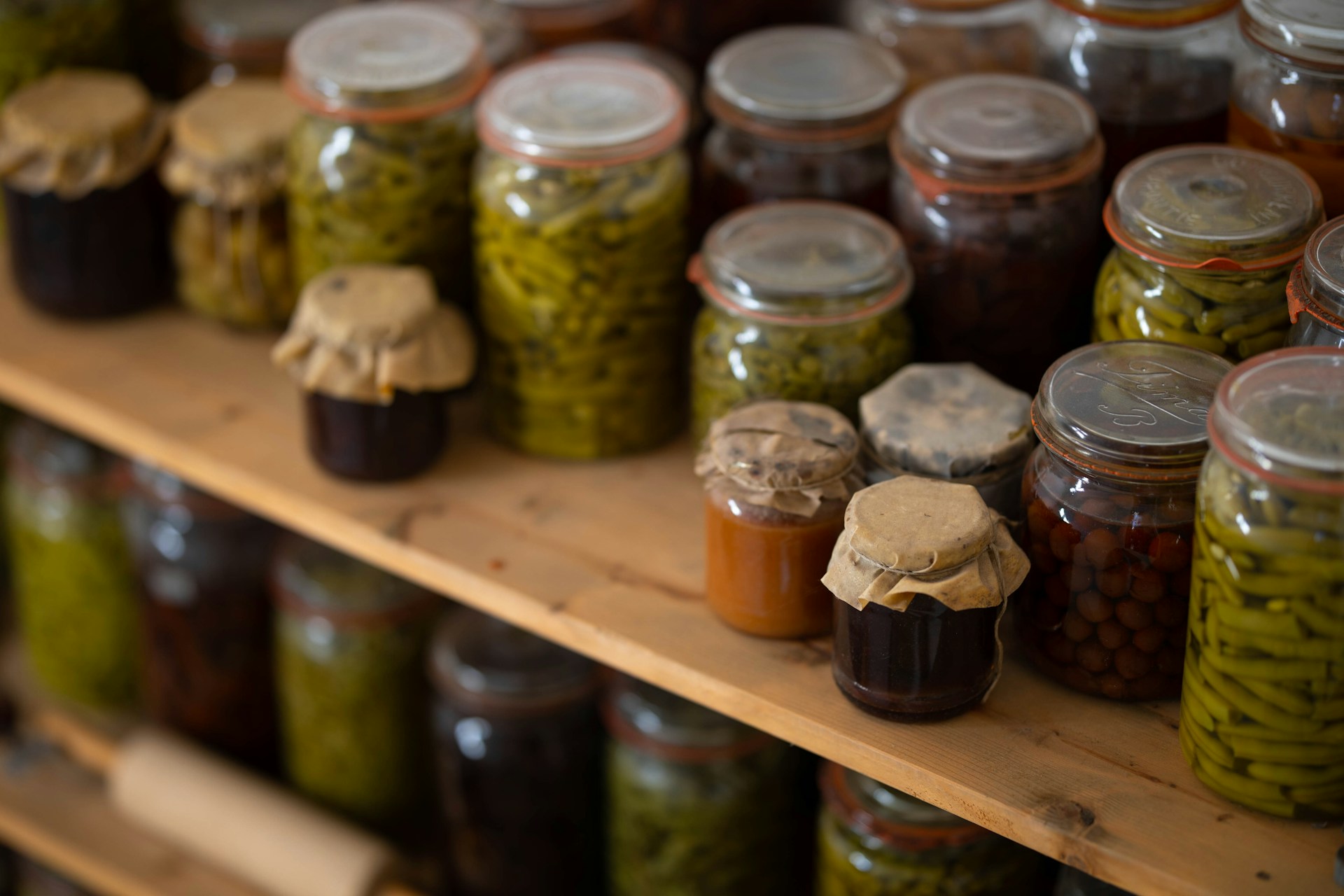Preparedness
Tips for Road Safety

Traveling on the open road can be an incredible adventure, but it’s important to prioritize safety along the way. As a seasoned explorer and advocate of preparedness, I believe that being well-prepared and informed is essential for any journey. Whether you’re a seasoned traveler or hitting the road for the first time, these safety tips will help ensure a smooth and secure journey.
1. Regular Vehicle Maintenance:
Before embarking on any road trip, it’s crucial to have your vehicle thoroughly checked. This includes inspecting the tires, brakes, fluids, lights, and wipers. Keep up with routine maintenance and address any issues promptly to avoid unexpected breakdowns on the road.
2. Plan Your Route:
A well-planned route is not only essential for saving time but also for your safety. Identify major landmarks, fuel stations, rest areas, and emergency services along your intended path. Additionally, have a backup route in mind in case of detours or road closures.
3. Familiarize Yourself with Road Laws:
Each state or country may have different traffic laws and regulations. Make sure to familiarize yourself with the rules of the road before crossing any borders. Adhere to speed limits, wear your seatbelt, and avoid distracted driving at all costs.
4. Share Your Itinerary:
Inform a trusted friend or family member about your travel plans, including your route, expected arrival times, and contact information. Regularly update them on your progress and if any changes occur. This way, someone will always know where you are and can act promptly in case of an emergency.
5. Emergency Kit Essentials:
Prepare an emergency kit that includes a first-aid kit, flashlight, spare tire, tire jack, jumper cables, and a basic toolkit. Additionally, pack some non-perishable food, water, and a blanket in case you become stranded for an extended period.
6. Stay Alert and Avoid Fatigue:
Long road trips can be exhausting, leading to driver fatigue. Take regular breaks to stretch, rest, and recharge. If you’re feeling drowsy, stop in a safe location and take a power nap. Remember, your safety and the safety of others on the road depend on your alertness.
7. Secure Valuables and Lock Doors:
When stopping to rest or explore, always lock your vehicle’s doors and ensure that all valuables are out of sight. Thieves are opportunistic, and an unattended vehicle can be an easy target. Don’t make yourself vulnerable to theft or break-ins.
8. Be Weather-Wise:
Weather conditions can change rapidly during a road trip. Stay updated with weather forecasts and be prepared for adverse conditions. If you encounter heavy rain, snow, or fog, reduce your speed, increase following distance, and use your headlights accordingly.
9. Avoid Nighttime Travel:
While road trips often involve longer drives, it’s best to avoid extensive nighttime travel, especially in unfamiliar areas. Reduced visibility and fatigue increase the risk of accidents. Whenever possible, plan your journey to allow ample time for rest before continuing.
10. Be Mindful of Wildlife:
When driving in rural or forested areas, be aware of potential wildlife encounters. Animals crossing the road can be unexpected and dangerous. Pay attention to any wildlife warning signs and reduce your speed in these areas to improve reaction time.
Remember, safety should always be your highest priority when traveling on the road. By taking precautions, being well-prepared, and staying alert, you’ll ensure a more enjoyable and secure journey. So buckle up, keep your eyes on the road, and embrace the adventure that awaits. Safe travels, fellow explorers!
Disclaimer: The article provides general safety tips and information. Always keep in mind that local laws, regulations, and circumstances may vary, so adapt these suggestions accordingly.

Preparedness
Discover the Secret to 25-Year Emergency Food Supplies

When it comes to emergency preparedness, ensuring a reliable food supply is crucial. Meals Ready-to-Eat (MREs) are a staple in any disaster readiness plan, and Patriot MRE food kits stand out for their comprehensive nutrition and long shelf life. These kits are crafted to be a dependable food source during emergencies when regular access to fresh groceries may be disrupted.
Patriot MREs are designed to last between 5 to 10 years, with some brands claiming up to 25 years when stored properly. This longevity is achieved through advanced preservation techniques like nitrogen flushing and vacuum sealing, which effectively remove oxygen and prevent spoilage. The meals are stored in durable pouches that protect them from moisture, light, and oxygen, ensuring they remain fresh and nutritious over time.
“Patriot MRE food kits provide complete nutrition and long shelf life, making them an essential component of any emergency preparedness plan.” Each kit is designed to meet a person’s daily caloric needs, offering a range of familiar, tasty foods such as pasta, eggs, and chicken. With a focus on balanced nutrition, these meals provide over 2,000 calories per day, ensuring sufficient energy and protein intake during a crisis.
One common concern about emergency food supplies is the potential lack of taste or variety. However, Patriot MRE kits address this with a diverse selection of meals, including options like chili mac, chicken fajita pasta, and biscuits and gravy. The meals are packaged in resealable pouches, allowing for portion control and storage of leftovers, which is particularly useful in long-term emergencies.
Proper storage is key to maximizing the shelf life of Patriot MREs. It’s recommended to keep them in a cool, dark place, such as a basement or root cellar, to maintain maximum freshness. “With a 25 year shelf life, Patriot Supply MREs lead the industry,” making them a reliable choice for long-term emergency food reserves.
Several brands offer high-quality Patriot MREs, each with unique features. My Patriot Supply is renowned for its durable, resealable pouches and a wide range of meal options, ensuring over 2,000 calories per day. Their kits are engineered to last up to 25 years, providing reliable nutrition when needed most.
4Patriots focuses on convenience with grab-and-go pouches that are designed to withstand extreme conditions while delivering essential nutrients. Ready Hour offers bulk options with diverse menus, making it an affordable choice for those looking to stock up on emergency food supplies. Meanwhile, Mountain House is known for its gourmet flavors and 30-year shelf life, offering a premium option for those who prioritize taste.
Building a customized emergency food supply is a smart strategy to meet your household’s unique needs. Start by calculating the daily caloric requirements for each family member, taking into account factors like age, health conditions, and activity levels. Customize your stockpile by purchasing individual pouches that align with your family’s dietary preferences and restrictions.
To get the most out of your investment, proper storage is essential. “Store pouches in a cool, dry place with temperatures below 75°F” to ensure they retain their nutritional value and taste. Regularly rotate your stock and monitor expiration dates to maximize freshness.
In addition to food, don’t forget to include water and preparation tools in your emergency planning. MREs require water for preparation, so ensure you have adequate water storage and purification methods. Portable cooking tools, such as a camping stove and utensils, are also necessary for meal preparation in the absence of electricity.
Overall, Patriot MREs provide a practical and nutritious solution for emergency preparedness. With their long shelf life, balanced nutrition, and convenient packaging, these kits offer peace of mind and sustenance during times of crisis.
Let us know what you think, please share your thoughts in the comments below.
Preparedness
Hidden Storage Spaces for Ultimate Preparedness

Starting your journey into preparedness can be daunting, especially when it comes to finding storage space for all your essential supplies. Many people find themselves saying, “I don’t have anywhere to put all these preps!” Without a basement or dedicated storage room, it can feel like an impossible task. However, there are several creative strategies to maximize your available space.
Firstly, remember that food items require a cool, dark environment with minimal temperature fluctuations, so avoid storing these in garages or unheated areas. Non-food items don’t have these restrictions and can be safely stored in places like the garage or attic.
One often overlooked space is right under your bed. By swapping your bed frame for a taller one with a lift top, you can gain a significant amount of hidden storage. The exact amount of space will depend on the size and height of your bed. You can purchase storage bed frames or, if you’re handy, construct your own. These frames come in various configurations, some more discreet than others.
If you’re storing dehydrated food, such as the kind from MyPatriotSupply, you might be able to fit a year’s supply for one or two people under your master bed. For children’s beds, consider a captain’s bed with cupboards accessible from the opposite side of the drawers. This setup allows for organized storage of various items, from long-term food to clothing and toys, keeping the room tidy and functional.
Another underutilized space is beneath the stairs. You can create access points from the lower level or even from the treads if you’re skilled in DIY projects. This can provide a surprising amount of additional storage.
For homeowners, consider creating shelving between the studs in your walls. This method offers a discreet way to store canned food and other items. There are metal units available specifically designed for this purpose, allowing for easy rotation and access. This approach helps prevent food from expiring unnoticed at the back of your pantry.
Innovative furniture solutions can also contribute to your storage needs. For instance, you can transform 5-gallon buckets into “coffee tables” by placing a wooden top over them and covering it with cloth. Alternatively, move your sofa out by about six inches and stack #10 cans behind it, topped with a board.
Maximize your space by using organizers and shelves, and clear out items you no longer need. You’ll be amazed at how much space is freed up with a little organization.
Bookshelves, for example, can double as storage for canned food and sealed pouches. Most books are 6 to 8 ½ inches wide, leaving room to discreetly store canned goods behind them. Taller hardbacks can conceal a double row of cans, while pouches stand up neatly on their own.
Finally, maintain an inventory of your preps. Knowing exactly what you have and where it’s stored is crucial for effective preparedness. This will also help you identify any gaps in your supplies, ensuring you’re always ready for whatever comes your way.
Let us know what you think, please share your thoughts in the comments below.
Preparedness
Unlock Homesteading Secrets Without Spending a Dime

Many aspiring homesteaders hesitate to embark on their journey, fearing the financial burden it might bring. While it’s true that starting a homestead can be costly, there are ways to begin without spending a dime. The key lies in changing your mindset and embracing resourcefulness.
You might not have the funds to purchase acres of land, but that doesn’t mean you can’t utilize the space you already have. It’s unnecessary to invest in expensive chicken coops or other equipment when you can create them yourself. Many newcomers to homesteading spend unnecessarily, forgetting that the essence of this lifestyle is self-sufficiency and minimizing expenses.
A guiding principle for starting a homestead with no money is to adopt the mindset of those who lived through the Great Depression: “use it up, wear it out, make it do, or do without.”
An essential step towards self-sufficiency is prioritizing debt reduction. Being tied to monthly payments to others restricts your freedom. By focusing on paying down debts, you can redirect those funds towards essential homesteading needs.
Homesteading is a journey, not a race. New homesteaders often rush to buy unnecessary supplies. Instead of investing in a greenhouse before planting a small garden, take the time to plan your projects and budget accordingly.
One practical approach to starting a homestead without money is to buy used items. Make it a goal to avoid purchasing new items unless absolutely necessary. This not only saves money but also aligns with the homesteader’s goal of minimizing waste.
Utilize every bit of space you have, especially if it’s limited. Preserve food, repurpose materials, and explore creative uses for items you already own. Bartering is another valuable tool. Trading goods or services, like produce for eggs or skills for other necessities, can be a cost-effective way to acquire what you need.
To thrive as a homesteader, become a DIY enthusiast. Learn to fix things, sew, knit, and preserve food. These skills don’t cost anything to acquire but are invaluable in the long run.
Rather than envisioning a massive farm, start small. Begin with a backyard or kitchen garden, and expand as you gain experience and resources. You don’t need to grow all your food immediately. Supporting local farmers’ markets can supplement your family’s diet with fresh produce.
Livestock is integral to homesteading, but it’s easy to overspend. For example, many invest in elaborate pre-made coops instead of building their own. More spending doesn’t always equate to better quality, as one friend discovered when she ended up with more roosters than she bargained for.
Engage with your local homesteading community. These experienced individuals can offer advice, lend tools, and even share resources like cuttings. They are usually eager to help newcomers get started.
Composting is a nearly free practice that saves money and enriches your garden. It exemplifies the homesteader’s commitment to using up what they have.
If acquiring land seems out of reach, consider alternative options like community gardens or sharing space with neighbors. Some may have more land than they can manage and might appreciate sharing it in exchange for some of the produce.
There’s no need to rush out and buy seeds or plants. Ask neighbors or fellow homesteaders for cuttings or seeds they can spare. Often, people discard useful building materials like wood pallets and chicken wire. Keep an eye out for these free resources around construction sites or landfills.
Finally, make regular visits to your local library. It’s a treasure trove of free resources, including books and DVDs, that can teach you essential homesteading and DIY skills.
While starting a homestead with no money is challenging, it’s not impossible. By selling what you produce, you can gradually generate income to support your homestead. Remember, financial constraints shouldn’t deter you from pursuing your homesteading dreams.
Let us know what you think, please share your thoughts in the comments below.
-

 Tactical12 months ago
Tactical12 months ago70-Year-Old Fends Off Intruder with Lead-Powered Message
-

 Tactical11 months ago
Tactical11 months agoVape Shop Employee Confronts Armed Crooks, Sends Them Running
-

 Preparedness8 months ago
Preparedness8 months agoEx-Ballerina’s Guilty Verdict Sends Tremors Through Gun-Owner Community
-

 Preparedness6 months ago
Preparedness6 months agoGood Samaritan Saves Trooper in Harrowing Interstate Confrontation
-

 Tactical12 months ago
Tactical12 months agoMidnight SUV Theft Interrupted by Armed Homeowner’s Retaliation
-

 Survival Stories1 year ago
Survival Stories1 year agoEmily’s 30-Day Experience of Being Stranded on a Desert Island
-

 Preparedness7 months ago
Preparedness7 months agoArizona Engineer’s Headless Body Found in Desert: Friend Charged
-

 Preparedness6 months ago
Preparedness6 months agoBoy Saves Dad from Bear Attack with One Perfect Shot
Tim
November 7, 2023 at 3:00 pm
avoid, as much as possible, you society becoming hazardous in the first place. Being a citizen comes with responsibility. Keep the insane at a great distance, usually in a safe space (institution or 6′ underground) for the betterment of all involved.